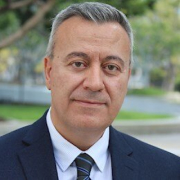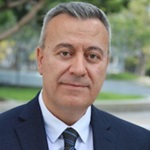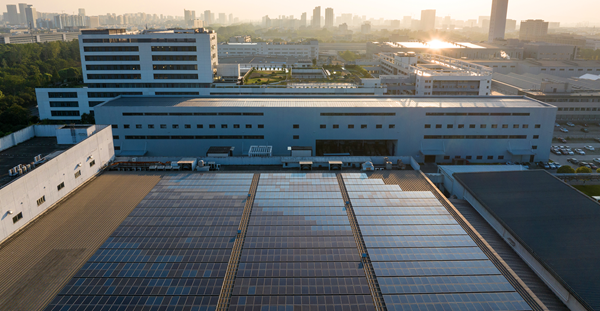This year’s WateReuse California Annual Conference was all about building a resilient future together. We joined experts from across the water reuse community to analyze the latest in planning, treatment, delivery, funding and outreach opportunities. Here are five takeaways from the event that communities, academic institutions, regulators, consultants, equipment suppliers and utilities can leverage to advance toward becoming fit-for-future.
-
One Water is happening, enabled by fit-for-future organizations
Agencies such as Las Virgenes Municipal Water District, Triunfo Water & Sanitation District, and the City of Santa Monica are thinking beyond potable reuse and embracing One Water. They are looking for alternative water supply sources (stormwater, dry run-off, brackish groundwater, etc.) to augment their recycled water in more efficient and sustainable ways, making every drop count. Other agencies could be on the same path soon. Tighter regulatory requirements; increased costs associated with Municipal Separate Storm Sewer System (MS4) and National Pollutant Discharge Elimination System (NPDES) requirements; funding availability; environmental stewardship; and public and regulatory support will push organizations toward using One Water to solve these challenges and reap the benefits certain agencies are realizing already.
- Artificial intelligence, machine learning and predictive analytics will lead to better decisions
Data-driven intelligent applications are gaining traction within California water agencies, and for good reason. Harnessing the power of artificial intelligence algorithms and big data analytics will be key to shattering the silos of traditional water networks and embracing One Water. Data can help teams expose areas to combine strengths and eliminate redundancies, which will enhance asset management capabilities while reducing operations and maintenance costs.
- Reverse osmosis (RO) concentrate is a hot topic again
California’s low total organic carbon requirement is driving RO-based treatment in potable reuse projects. So far, agencies that implemented potable reuse in coastal areas have found a cost-effective way of discharging the RO concentrate streams from the potable reuse trains into the ocean. It might not be a model every organization can follow, though. Future restrictions and regulations for ocean discharges, not to mention a need for construction of lengthy and complex conveyance systems to carry RO concentrate into outfalls, may hinder such practices.
With changes on the horizon, many agencies are thinking about ways to treat and recover RO concentrate streams. Some are exploring how to provide a natural treatment to polish RO concentrate before final disposal, while others are looking at energy-intensive discharge solutions. As organizations explore solutions, following the data can unlock innovations around RO concentrate.
- Direct potable reuse (DPR) regulations are shaping up
The Draft DPR regulations were released earlier in 2021 and public comments were collected before the conference. While we have more than two years until we see the finalized regulations, agencies have been a part of the discussions, and are seeing DPR as a viable option for diversifying supply sources. DPR demonstration projects (e.g. Los Angeles Department of Water and Power’s Headworks project) are currently testing capabilities of DPR trains for chemicals and pathogen removal.
- We found the missing element
Water Reuse Association did a remarkable job successfully setting up virtual conferences in 2020, but something was missing – the human element. It was incredible to have that back, cementing existing bonds and forging new relationships with the broader water reuse community. Carrying that reinvigoration forward we can apply the insights shared at the event collaboratively, creating a launching pad for our next wave of One Water success.
What’s next for reuse?
The symposium was an invigorating look into the future. It was clear that reuse continues to be a main component of One Water, and progress will be fueled by innovative treatments, delivery methods, outreach programs, funding opportunities and partnerships that push the bounds of reuse’s potential.
Discovering where the innovations lie will require more sophisticated approaches to managing advanced systems, larger data pools and an evolving workforce. We consider these elements as part of becoming fit-for-future. They will unlock the abilities to develop One Water solutions, optimized operations and maintenance, transparent and defendable spending programs, and a heightened ability to deliver outstanding customer service.
Connect with me on LinkedIn if you want to hear more about how the fundamentals of fit-for-future water utilities can bolster your reuse strategy. Check out our interactive web experience and podcast series for deeper dives into each fundamental, and read Tanya McCoy-Caretti’s blog on how people tie them together.
About the author
Ufuk Erdal, PhD, PE
Water Reuse Director
Ufuk has led the planning, pilot testing, design, commissioning and delivery of more than 50 potable and non-potable reuse projects serving municipal and private clients in the U.S., Australia, Brazil, Argentina, Saudi Arabia and Taiwan. He has evaluated the pathogen removal capabilities of MBR systems in two full-scale MBR facilities in Nevada. That work resulted in the first regulatory pathogen credits toward MBR systems in the U.S. and has become the initial step for developing a regulatory framework for getting pathogen credits for MBR systems in California. Dr. Erdal is currently working with his team to develop sustainable water reuse solutions using artificial intelligence, machine learning and predictive algorithms.
With more than 75 journal articles and conference proceedings, Ufuk has contributed to California’s direct potable reuse framework and is helping Georgia develop its own. Ufuk has served at the Water Research Foundation Board of Directors between 2017 and 2020 to develop sustainable and cost-effective water management solutions using advanced research.






